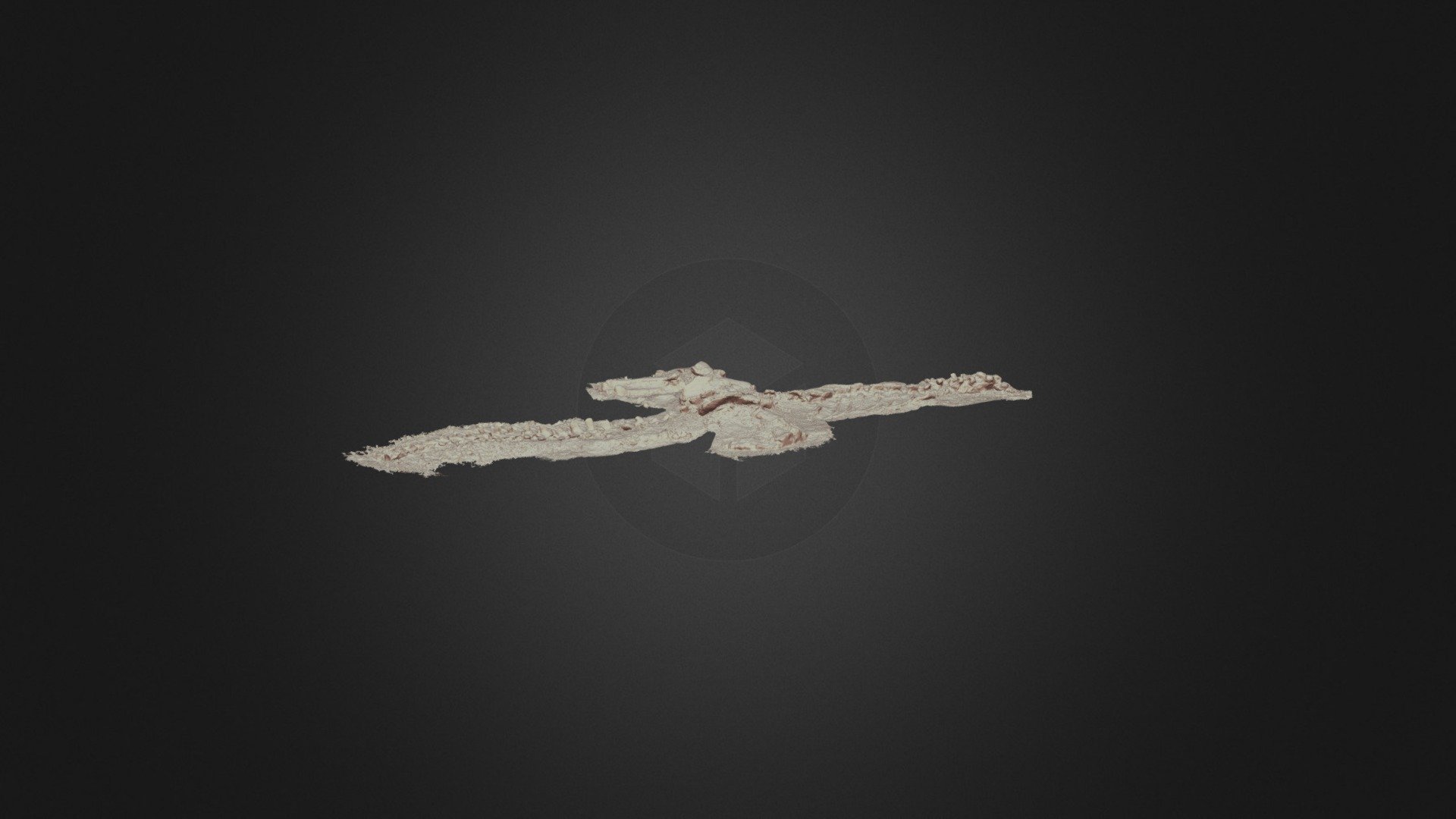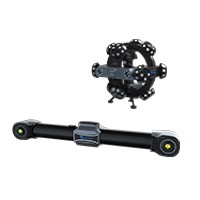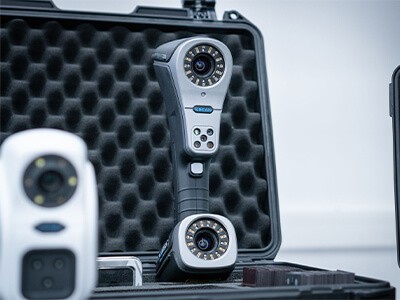What is a 3D body scanning?
A 3D body scanning is a technological process that employs 3D scanning technology to capture the surface geometry and intricate details of the human body. Utilizing a 3D body scanner, this scanning method gathers data points across the body’s surface, generating a three-dimensional model typically presented as a point cloud. These point clouds intricately capture the contours, curves, and nuanced features of the human body, resulting in the creation of highly detailed and authentic digital representations.
Several technologies facilitate 3D body scanning, including structured light scanning, laser scanning, and multi-view stereography. Notably, structured light scanning is a prevalent technique that achieves precision in crafting 3D models by projecting light patterns and utilizing cameras to record these patterns on the human body’s surface.
The applications of 3D body scanning technology extend across various domains, such as the fashion industry (for tailored clothing), the medical field (for personalized medical equipment and orthotics), and the sports sector (for analyzing and optimizing athlete postures), among others. By delivering precise body measurements, it serves as a robust solution for diverse customized and personalized requirements.
What contributes to the popularity of 3D body scans?
The widespread adoption of 3D body scanners can be attributed to their revolutionary impact across various domains, particularly in the realm of body measurement. The accessibility and non-intrusiveness of 3D scanning, coupled with ongoing technological advancements that enhance device capabilities, position this technology as an optimal solution for meeting individual requirements and streamlining processes across diverse industries. Notably, 3D body scanning introduces innovative possibilities for crafting fashion accessories and personalized mementos.
Furthermore, the reliability of 3D body scanners as systems for recording and measurement plays a pivotal role in ensuring the effectiveness of training programs and recovery interventions. As a tool dedicated to health and fitness, its inherent convenience further amplifies its appeal and contributes to its sustained popularity.
Advantages of 3D Body Scanning
The benefits of 3D body scanning extend across various domains, showcasing its prowess in accuracy, personalization, and diverse applications, ushering in innovation and convenience in fields such as fashion, healthcare, sports, and design.
High Accuracy
3D body scanning excels in providing precise body measurements, capturing intricate curves and features with unparalleled accuracy. This technology can reveal details imperceptible to the human eye, making it invaluable in numerous scenarios. The quality of results is contingent on the type of body scanner employed, with some advanced systems capable of simultaneously capturing detailed images of multiple individuals, including color and texture.
Personalized Customization
A significant advantage lies in personalized customization, catering to the fashion industry and healthcare. In fashion, 3D body scanning enables the customization of clothing and accessories, delivering consumers a unique and personalized fashion experience. In the medical field, accurate body data obtained through 3D body scanning facilitates the manufacturing of personalized medical and rehabilitation equipment, addressing patient-specific needs and advancing personalized medical treatments.
Fast and Non-Invasive
3D body scanning surpasses traditional measurement methods with its speed and non-invasiveness. The technology operates swiftly, eliminating the need for direct contact with the individual being measured, thereby minimizing discomfort during the process. This efficiency makes 3D body scanning ideal for large-scale data collection and diverse applications.
Digital Design Integration
Serving as a foundation for innovative design and digital modeling, 3D body scanning fosters the convergence of technology and design. Designers and engineers leverage high-precision body measurement data for digital modeling and virtual prototyping. This accelerates product development cycles, reduces manufacturing costs, and propels the evolution of digital design and production.
Applications and Cases of 3D Body Scanning Technology
The versatility of 3D body scanning technology extends beyond traditional industries, making significant contributions to various sectors:
Fashion and Custom Clothing
In the fashion industry, 3D body scanning is employed to craft customized clothing. Precise body measurements enable designers to create garments tailored to individual body shapes, enhancing both fit and comfort.
Scantech iReal 3D scanners are capable of creating accurate body models for customized clothing, spanning from scanning to garment production. Their precision, efficiency, and potential to develop customer body databases could have a transformative impact on the garment industry. For more detailed information, visit 3D Scanning Technology Enables Flexible Garment Production.
Medical and Rehabilitation
3D body scanning technology in healthcare delivers personalized, precise, and efficient medical services to patients. It equips medical professionals with powerful tools to enhance diagnosis, treatment, and recovery processes.
By providing precise, quick, and non-contact measurements, Scantech iReal 3D body scanner offers significant benefits in the customization of orthopedic braces, ensuring high accuracy and enhanced comfort for the patient. For more detailed information, visit Comprehensive 3D Solution for Health Care.
Sports Science and Training
Widely used in sports science, 3D body scanning analyzes athletes’ posture and movements. This aids in improving motor skills, preventing sports injuries, and optimizing overall athletic performance.
Digital Modeling and Design
Serving as a digital design tool, 3D body scanning creates realistic human body models. Designers gain access to accurate body shape and proportion data, supporting innovative and precise designs.
Cultural Heritage Protection
In the realm of cultural heritage, 3D body scanning is employed for recording and protecting cultural relics and monuments. High-precision scanning leads to the creation of digital cultural heritage archives, supporting restoration and research efforts.
A noteworthy application of this technology is the use of the Scantech TrackScan 3D system in scanning dinosaur fossils. This advanced 3d scanning system provides an unprecedented level of detail and accuracy, capturing the intricate textures and structures of the fossils. By creating high-resolution 3D models, the TrackScan 3D system allows paleontologists and researchers to conduct in-depth analyses and virtual simulations. Moreover, the digital preservation of fossils through 3D scanning opens up new possibilities for education and public engagement. For more Detail from: https://www.3d-scantech.com/3d-models/dinosaur-fossils/
Game Development
3D body scanning also plays a crucial role in game development. It contributes to the creation of more realistic characters and immersive gaming experiences.
Education and Research
In education, 3D body scanning is applied to subject research and medical education. Students and researchers benefit from a better understanding of human body structure and function through digital models.
A prime example of this is the creation of a virtual bone repository by CEU Cardenal Herrera University using Scantech iReal 3D color scanner. This project involved scanning a variety of bones, achieving detailed models with realistic textures and colors. The repository serves educational and research purposes, offering a valuable digital resource for studying anatomy and morphology across different species. It exemplifies the potential of 3D scanning in enhancing medical learning and protecting physical specimens. For more detailed information, visit CEU Cardenal Herrera University Creates a Virtual Bone Repository with Scantech’s 3D Scanner
The Best 3D Body Scanners
Embark on a revolutionary 3D scanning journey with the iReal series, spearheaded by Scantech. Recognized as the pinnacle of 3D data collection, the iReal series, particularly the iReal M3, stands as an unrivaled choice, delivering exceptional performance and unmatched flexibility. Setting itself apart, the iReal M3 seamlessly transitions between infrared laser and structured light modes, ensuring a flawless 3D data collection experience across diverse application scenarios. Whether scanning individuals or objects, indoors or outdoors, the iReal M3 accomplishes each task with effortless precision.

Opting for the iReal M3 guarantees an unparalleled fusion of high performance, adaptability, and user-friendly design, presenting an extraordinary solution for all your 3D scanning requirements. Explore more about the groundbreaking Scantech iReal series, leading the way into the future of 3D scanning.”

















